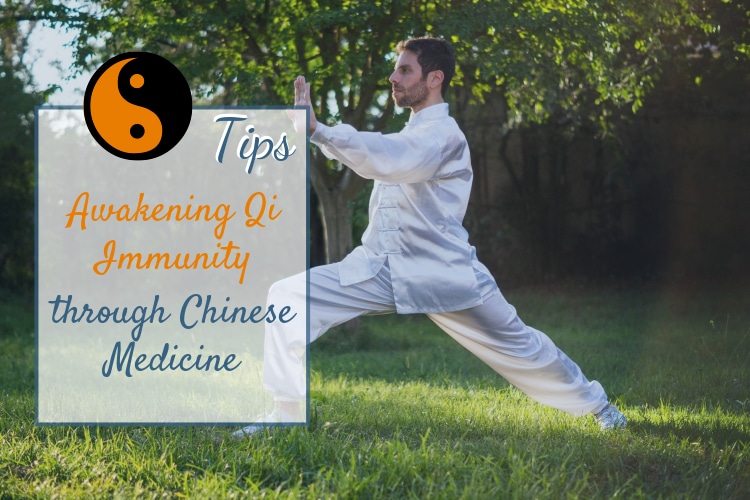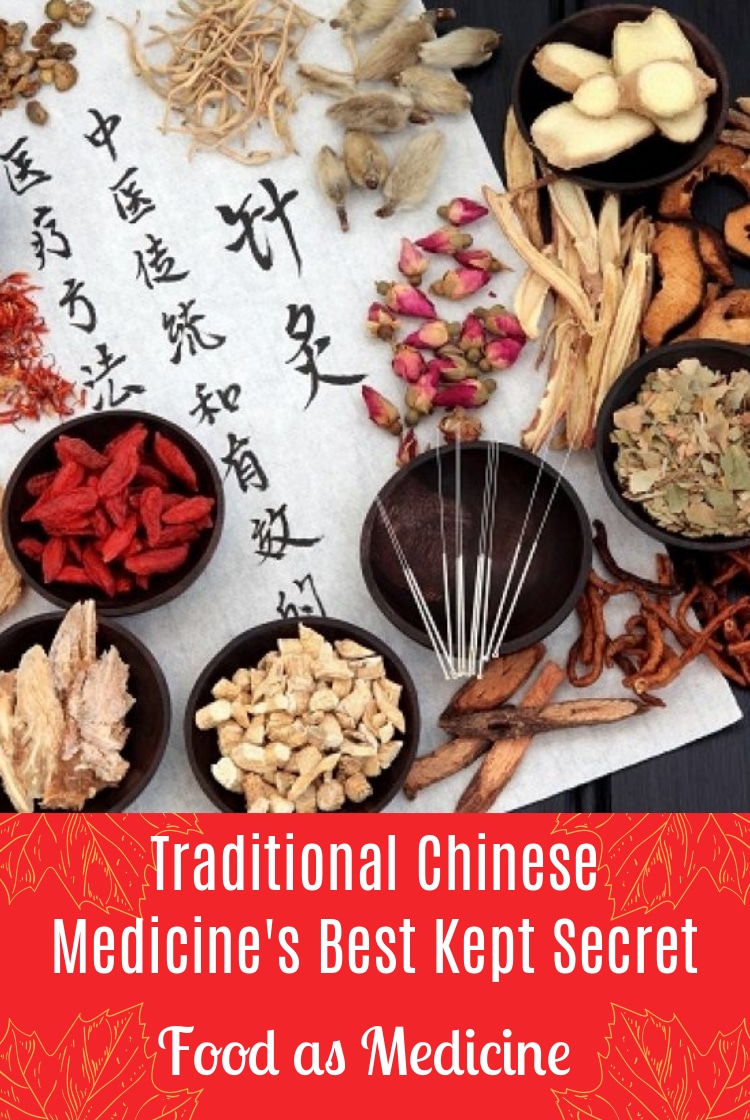
Chinese Medicine: Herbalism Guide for Health
By Shoshanna Katzman, MS, Dipl., L.Ac. & CH
Chinese medicine is an ancient system of medical wisdom and clinical tradition developed approximately 4,000 years ago to restore health and wellbeing. Over 15 million Americans have turned to it as a form of alternative/complementary medicine.
Its main premise is that illness arises when the cyclical flow of qi becomes unbalanced, blocked, or depleted. Within this paradigm, the quality of health depends on how and where this energy flows.
Its primary goal is to adjust and balance the energetic system to establish and maintain a free flow of qi (vital energy) throughout the body, thus working to address physical symptoms. This state of free-flowing energy promotes blood flow, which transports nourishment to the vital organs, glands, and tissues.
Moreover, when qi is flowing properly it maintains a solid connection between the body, mind, and spirit, connecting it as an integrated whole. Such wholeness naturally empowers the body to be in a state of optimum health.
Chinese medicine treatments accomplish this goal through the opening and releasing blockages of qi, combined with the strengthening of deficiency within energetic pathways of the body, known as meridians.
This is accomplished in various ways, which include acupuncture, Chinese herbal medicine, qigong, and tai chi exercise, Chinese dietary therapy, tuina massage, and Chinese medicine lifestyle recommendations.
They have used alone or in combination with each other, all based on a Chinese medicine view of health that emphasizes the influence of emotions, nature, electromagnetic forces, and energy on the human body.
Acupuncture involves the insertion of hair-thin needles into acupuncture points located along the meridian pathways. Acupuncture is best known for the alleviation of pain, however, it is highly effective for resolving internal dysfunction involving the digestive, immunological, reproductive, respiratory, neurological, and circulatory systems as well.
It also serves to balance emotions, alleviate stress, counteract anxiety, and boost energy. Acupuncture is also highly effective in terms of increasing fertility and virility and supporting a woman throughout pregnancy, as well as post-partum care. It is used for acute and chronic issues and an excellent way to maintain health when used preventatively.
Acupuncture has become widely accepted as an effective and viable form of treatment to complement the Western medical approach. It is a treatment that is surprisingly painless, one that is deeply relaxing and healing.
Table of Contents
Chinese Herbal Medicine
Chinese herbal medicine is another modality used for health promotion. It is one of the most highly developed, time-proven systems of herbalism in the world.
Detailed information gained about each herb is found in classical Chinese medical texts, known as the Chinese herbal pharmacopeia, which includes hundreds of distinct Chinese herbs in the form of roots, barks, seeds, flowers, leaves, stems, minerals, and animal parts.
Each herb has been analyzed according to its energetic effect on the body and tested scientifically to determine its chemical constituents, in addition to being analyzed and perfected through clinical application throughout the centuries.
They are used individually to treat specific energetic imbalances and physical symptoms, but most are combined together into what is traditionally known as “a formula.”
Approximately 3,200 herbs and 300 mineral and animal extracts are combined into more than 400 different formulas. Each herbal formula may contain 4 to 12 different ingredients and taken internally or applied externally in the form of teas, powders, pills, tinctures, syrups, oils, fomentations, or plasters.
Their multitude of healing effects includes strengthening of qi, nourishment of blood, calming heart and spirit, releasing of toxins, elimination of heat, and the like. Chinese herbal medicine functions to treat imbalances and prevention of illness, restorative overall health, as well as boosting immunity to promote resistance to disease.
Exercises
Qigong and tai chi exercises are another major component of Chinese medicine, practiced to cultivate qi, thereby supporting the welfare of the body. They are traditionally said to nourish the spirit, strengthen immunity, invigorate respiration, balance hormones, promote centeredness, balance, and bring harmony to the body, mind, and spirit, as well as retard the aging process.
Overall, these gentle and purposeful exercises serve to maintain abundant reserves of qi for self-healing, physical strength, flexibility, stability, and balance. They are characteristically slow, rhythmical, flowing, and meditative movements that summon the entire body to relax, known as the experience of “song.”
Qigong and tai chi movements are often synchronized with a slow, rhythmic, and deep breathing technique to increase lung capacity, cultivate and balance qi, calm heart, and spirit, and nourish vital essence to enhance healthful longevity.
It is the easier of the two in terms of learning the form and level of difficulty, thus can be practiced by almost anyone, regardless of ability. Qigong has been specifically designed for medical applications and incorporates vocalization of sound, visualization, and self-massage.
Tai chi beginnings derive from a more martial art standpoint, though today it is widely practiced predominantly as an exercise for healthful longevity and described as “meditation through movement.” Both tai chi and qigong are practiced by people of all ages, and best when practiced outdoors, thus forging a greater connection with nature.
Tui na is another special modality, which is a combination of therapeutic massage, acupressure, and other forms of body manipulation. It is a technique designed to restore the free flow of qi throughout the body by releasing blockages.
It also releases tension and tightness within the muscles, increases blood circulation, promotes relaxation, increased flexibility, and reduction in pain. Tui na works through the application of pressure to acupuncture points, meridians, and groups of muscles or nerves to remove blockages that prevent the free flow of qi.
Tui na is best suited for rectifying chronic pain, musculoskeletal conditions, and stress-related disorders that affect the digestive and/or respiratory systems. However, because it is designed to improve and restore the flow of qi, tui na treatment often leads to improvements in the whole body, not just a specific area.
Chinese Dietary Therapy
Chinese dietary therapy uses foods to balance the body energetically based upon an individual’s predominant constitution. It promotes balanced eating thus providing wholesome nourishment to the mind, body, and spirit.
Dietary recommendations are based on the Law of the Five Elements as applied to food. For example, the five tastes of food (sour, bitter, sweet, pungent, and salty) are recommended according to how they correspond to a particular color, respective meridians, and associated vital organs.
Additionally, each of these five tastes has a functional effect which is also taken into account during the application of Chinese medicine dietary therapy.
Chinese Medicine Practitioners
Chinese medicine practitioners teach the importance of living a healthy, balanced lifestyle. This includes components such as regular exercise, restful sleep, time to relax and revive, and a positive attitude as essential to leading a productive life in excellent physical health. Such lifestyle guidance increases awareness and the ability to listen and honor the inner needs of your body and mind.
Such lifestyle consultation helps promote commitment to behavior that enhances and preserves the vital energetic resources for continued physical health and wellness.
Each of these modalities and exercise regimes is provided according to the principles set forth in Chinese medicine such as the Law of the Five Elements, Yin Yang Theory, and The Eight Principles. Chinese Medicine practitioners gather information and weave it together into a pattern of disharmony, one uniquely decided upon based on an individual’s symptoms and signs.
A treatment plan is then decided upon based on this information and the special needs of each person. This includes a recommendation for a particular Chinese medicine modality, with recommended frequency and duration of such treatment or exercise.
This healthcare paradigm emphasizes the importance of prevention as a necessary first step toward the creation and maintenance of good health. The ancient Chinese medical texts are filled with information about how to prevent degeneration and disease combined with a multitude of guiding principles for creating a healthful and long life.
The first classic of Chinese medicine, the Nei Jing, states that treating disease after it arises is like beginning to dig a well after one has become thirsty or like forging spears after the war has already broken out.
As a holistic approach, Chinese medicine continues to be an invaluable resource for people worldwide. Its strength is in the treatment of the whole body, with the individual and their unique needs as the primary focus of treatment.
Moreover, it works when all other treatments have failed, providing hope where there was none. Fortunately, Chinese medicine has become enmeshed into the mainstream approach to health and healing in the United States – providing a viable and varied treatment option to suit the needs of many people, bringing lasting positive change and transformation to their health picture for a lifetime.
Enhance your Health with Qigong
Learn a series of gentle movements from the ancient Chinese art of self-healing and fitness, to maintain health and nurture your spirit.
Qigong is a form of energy medicine movement that activates the body both physically and energetically. During Qigong training, you learn to cultivate your Qi (vital energy) and increase energetic awareness. This results in an increased sensitivity to electrical, magnetic, and other energies not just emanating from yourself, but from others.
Through the practice of Qigong, one begins to strengthen and train the development of inner awareness. When this occurs, a person can begin to access information within themselves in an enhanced manner increasing inner wisdom.






